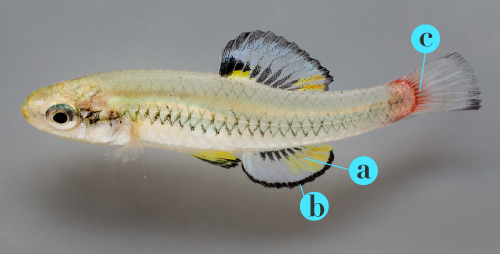|
|
|

The pigment melanin contributes to the black edges (b) on the anal fin that are a sign of dominance, while pterins account for the red and yellow colors (a) on the anal fin, and signal health. Carotenoids on the caudal fin (c) indicate that the fish is eating well. Brighter, more-intense colors are associated with better mating success.
Photo by L. Brian Stauffer; graphic by Julie McMahon
|
|
| Copyright 2024 Richard J. Sexton |